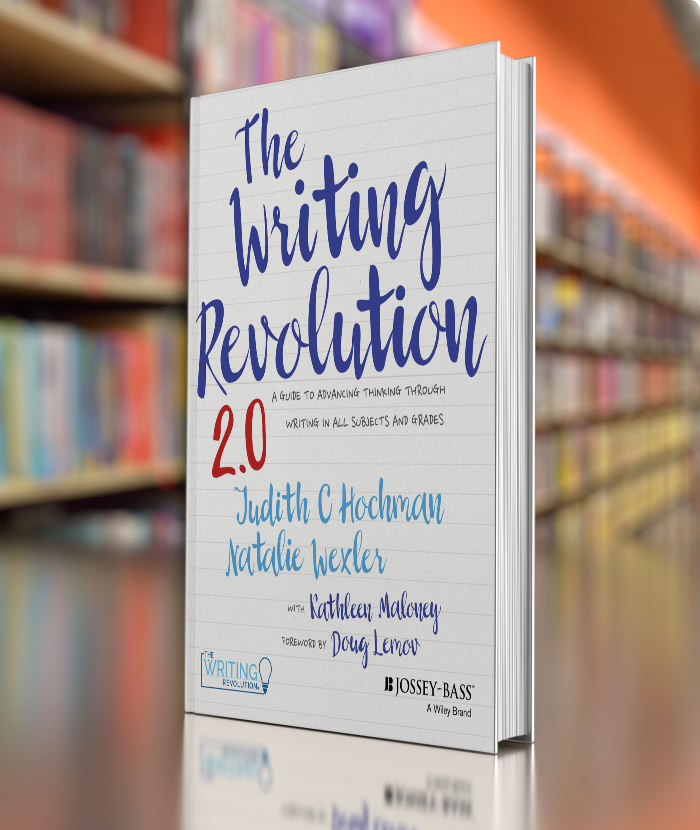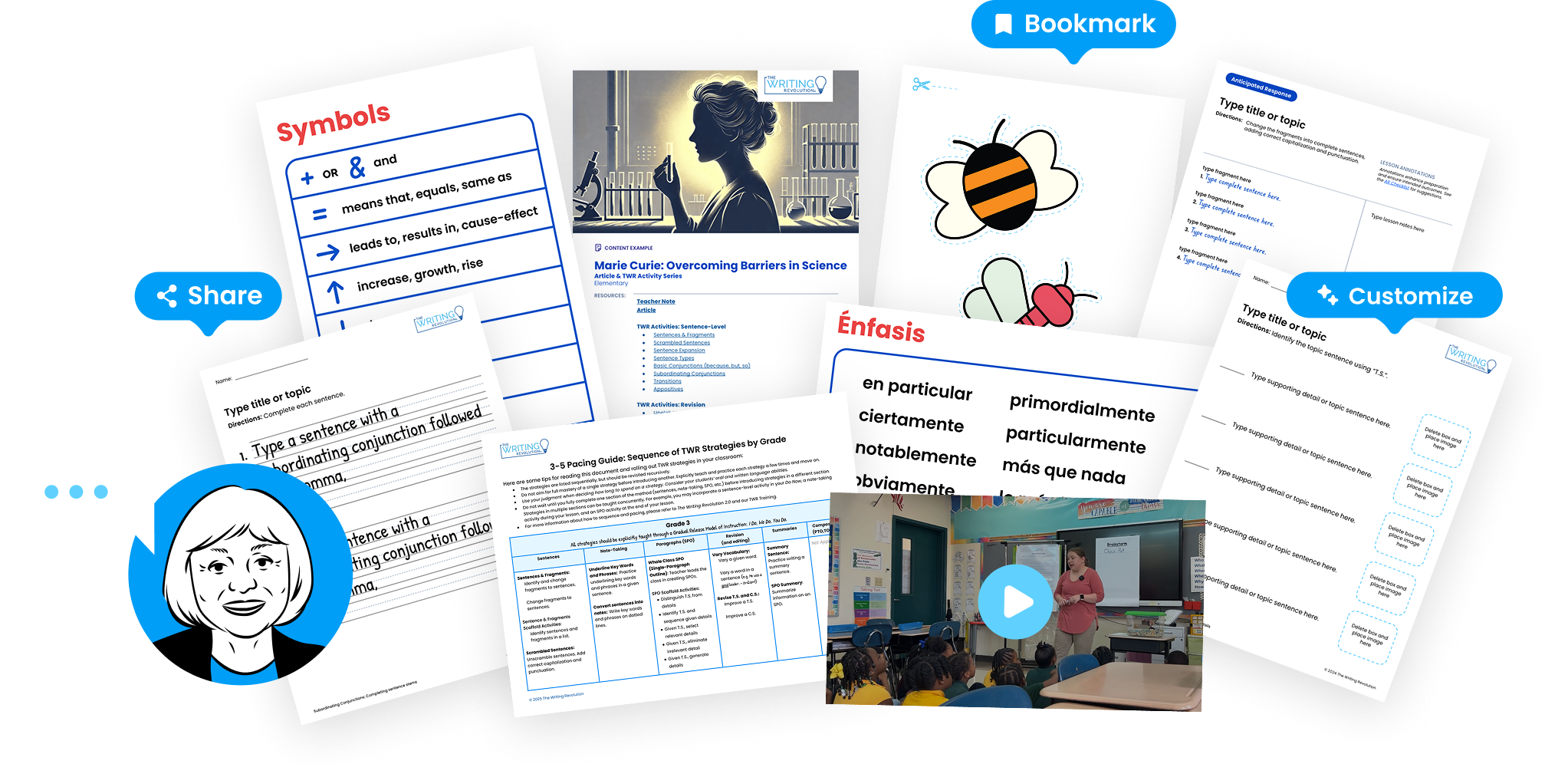Chapter 7
Revision: Putting it All Together
Revising, which involves making structural improvements to a draft, should be completed before editing, which focuses mainly on correcting mechanical errors. Students may find revising challenging, so it is important that it is explicitly taught. This chapter discusses how to teach students to revise using the language of the method and TWR strategies they have learned so far. Additionally, the chapter covers how to give students specific feedback on their writing.
Customizable Template
Unelaborated Paragraph
Grades 3-12
Content Example
Unelaborated Paragraph
Out of Content I Field Trip
Teaching Resource
Proofreading Symbols
Appendix D.
Teaching Resource
Student Revise & Edit Checklist
Appendix E.
Discussion Questions
- What is the difference between revising and editing? Which should receive the most instructional time? Why?
- What are the purposes of transition words and phrases in the revision process?
- Which sentence strategy do you think is referred to most frequently in revision feedback?
- Explain why unelaborated paragraphs are an effective way to teach revision.
- Why should unelaborated paragraphs have no spelling, capitalization, or punctuation errors?
- How can you make your feedback more meaningful for students?
MyTWR Tools
Turn your Hochman Method® training into effective daily instruction with 12-month access to:
- Judy, an AI activity generator & coach
- Content Examples for grades K–12
- Assessment Tools
- Planning Tools
- Classroom Tools
- Videos
- Monthly new and featured resources
- Customizable Templates
- Book Resources

